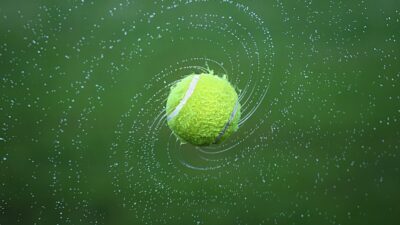The pinnacle of athletic achievement across numerous sports can be defined by one term: Grand Slam. Whether it’s tennis, golf, or even in the world of esports, succeeding in these elite competitions requires an extraordinary mix of skill, mental fortitude, and strategic planning. This article will explore what it takes to achieve Grand Slam glory, focusing on the essential elements that distinguish champions from contenders.
The Foundation: Technical Proficiency
At the heart of every Grand Slam champion lies unparalleled technical proficiency. Athletes dedicate countless hours honing their skills, often starting from a young age. For tennis players, this means mastering serves, volleys, and groundstrokes. Golfers invest years perfecting their swings and short games. This meticulous attention to detail ensures that, when the pressure mounts, athletes can execute their techniques flawlessly.
Training Regimens: Elite athletes typically follow customized training programs that emphasize repetition, strength, agility, and endurance. They work closely with coaches and trainers to fine-tune their skills and strengthen their bodies, optimizing their performance for high-stakes environments.
Mental Toughness: The Psychological Edge
Winning on the biggest stages demands not only physical skill but also an unyielding mental resolve. Mental toughness is often what separates champions from the rest. This encompasses:
- Focus: Ability to concentrate amidst distractions, whether it’s the roar of the crowd or looming expectations.
- Resilience: The capacity to bounce back from setbacks, be it losing a key point or facing defeat in a crucial match.
- Confidence: A strong belief in one’s abilities can dramatically influence performance. Champions visualize success and approach high-pressure situations with poise.
Mental Training: Many elite athletes incorporate psychological coaching into their training regimens. Techniques such as visualization, meditation, and even mindfulness practices help them master the mental game, preparing them for the rigors of competition.
Strategic Acumen: Game Plan and Adaptability
Every Grand Slam event presents unique challenges, and champions must develop astute game plans to secure victory. This includes:
- Research: Thoroughly analyzing opponents’ strengths, weaknesses, and playing styles.
- Tactics: Formulating strategies that leverage one’s advantages while exploiting opponents’ vulnerabilities.
- Adaptability: Being able to adjust game plans on the fly, a crucial skill that can make the difference during tightly contested matches.
Coaching Partnership: A coach’s role in shaping a player’s strategy is paramount. Many champions attribute their success to the collaborative effort with coaches who help devise effective game plans and provide real-time feedback during competition.
The Importance of Physical Conditioning
Grand Slam events can span several hours over consecutive days, demanding peak physical performance. Factors that contribute to an athlete’s physical readiness include:
- Stamina: Endurance is critical, especially in sports like tennis where matches can extend for hours.
- Strength: Power plays a significant role in both tennis and golf, where explosive movement can enhance performance.
- Injury Prevention: A comprehensive understanding of body mechanics helps mitigate injuries, allowing athletes to remain competitive throughout the rigorous Grand Slam circuit.
Supplemental Training: Many champions engage in cross-training, incorporating activities such as yoga, pilates, or strength training to enhance their overall physical condition, agility, and flexibility.
The Role of Support Systems
Behind every successful athlete is a robust support system. Family, friends, coaches, nutritionists, and psychologists all play critical roles in an athlete’s journey. This network provides emotional support, practical guidance, and tactical knowledge, creating an environment where athletes can thrive.
Media and Sponsorship: Navigating the spotlight and pressure that comes with Grand Slam events is crucial. Athletes often work with media specialists to manage their public image and sponsor relationships, allowing them to focus on their performance.
Conclusion: The Path to Grand Slam Glory
Grand Slam glory embodies the essence of human achievement, a manifestation of hard work, dedication, skill, and psychological resilience. From mastering techniques to developing mental fortitude, crafting strategic plans, maintaining peak physical condition, and relying on support systems, the journey to becoming a champion is multifaceted and arduous. Those fortunate enough to rise to the top of their sport create lasting legacies that inspire generations to come, reminding us all that with determination and the right preparation, anything is possible.
As spectators, we are privileged to witness these athletes chase their dreams and conquer the most significant challenges in their sports. Their stories of triumph and resilience in the face of adversity remind us that glory is not merely about winning; it is about the journey to achieving excellence.



